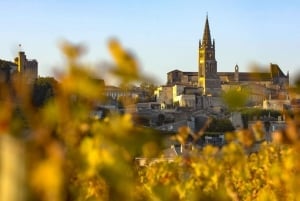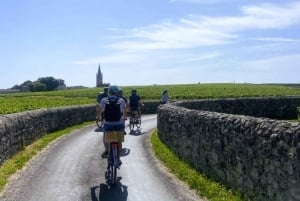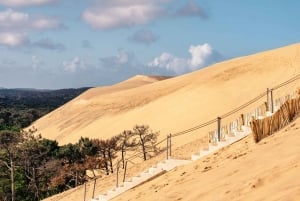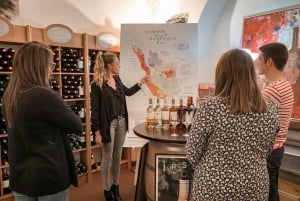Biarritz
Just the Facts
Why has a Southwestern French town with a population of just over 25,000 remained one the top international travel destinations? Answer: glamour, nightlife, beaches, surfing, food and accommodation. Biarritz is simply the pot of gold at the end of Europe’s longest beach with the best surfing in Europe, the Cote D’Argent.
Travelling southwest from Bordeaux along the Atlantic Coastline and through the Aquitaine region, it takes about 2 hours by car or train to cover the 190km/118 miles to reach Biarritz. You’re in the heart of French Basque country and only 32km/20 miles from the Spanish border. The robust among you could always bike the whole way from Bordeaux to Biarritz and stay mostly along the sea coast or the Cote d’Argent. voiesvertes.com/htm/departement40.htm#
For instant gratification fly in from a variety of European centers and land at the Biarritz Airport which is just 5 km South East of Biarritz and near Bayonne and Anglet. You could be on the beach in half an hour.
Biarritz Glitz
Is this a destination to keep to yourself -impossible. One of the early celebrities in Biarritz was Victor Hugo. In 1830 he prayed that the wild and beautiful seaside village of Biarritz would "never become fashionable". With the arrival of the newly married Napoleon III and his empress, Eugenie, in 1855, all Victor Hugo’s fervent hopes went out the window.
The royal couple built the aristocratic and stately Villa Eugenie as a summer residence and of course took the most prime beach frontage, La Grande Plage. (To this day, it’s still a spot to watch the posers.) Royal and upwardly mobile worthies followed the trend setting couple and made Biarritz the favoured destination to "take the waters". Look for the Thalassotherapy center on the sheltered Miramar beach.
Still on today’s "To See List" is the Chapelle Imperiale, built for Eugenie, with an intricately decorated ceiling and elegant wall tiling. A grand Russian Orthodox church was even constructed for visiting Russian royalty and is well worth a visit featuring its famous striking blue dome.
The crowds kept coming even when the Napoleons stopped returning to Biarritz in 1870 - a diverse group of artists, writers and glitterati continued to make Biarritz their own retreat. Biarritz was also the choice getaway of Emile Zola, Queen Victoria and then Edward VII of Great Britain, Hemingway, and of course, Victor Hugo.
Where the sandy pine dunes of the Landes meet the wild coast of the Basque country one can enjoy long promenades and spectacular views from along the cliffs. Perhaps that was enough for the Belle Epoque crowd but Biarritz also attracted the modern jet set crowd.
Things to Do
In 1901 the Art Deco styled casino was opened just behind the Grande Plage (beach) and well-heeled European tourists continue to favour Biarritz and it was also the start of the North American invasion. There are two main casinos now, the Barriere and the Bellevue on the waterfront by the Grande Plage. When the surfing crowd came on to the scene in the early 1950’s, nightlife really began to sizzle.
Surfing
In the late 1950’s the international surfing aficionados discovered the best waves on the continent at Biarritz and made it the unofficial surfing and windsurfing capital of Europe. There are 10 surfing schools open from April to November.
Five golden beaches at Biarritz, or rather silver, are all part of the Cote d’Argent which is known for its wild waves and silvery expansive stretches of sand. With cobbled villages and trendy hang outs, the surfer’s paradise area is known to the locals as "BAB" or Biarritz, Anglet and Bayonne. Biarritz could not be a more prime destination for surfing as the number of surfing events such as the annual Biarritz Surf Festival founded in 1993, and fine surfing camps and schools nearby can attest to. There is no end of enjoyment and challenge for all levels!
Food
The glamour of the early years of Biarritz remains to this day. The houses are still covered in purple blue bougainvillea and the old town is still easy to explore on foot. Summers are still crowded with holiday makers and surfers who meander the streets to celebrate and enjoy Basque cuisine, cafes, bistros and gourmand restaurants. Shopping remains high on the list too just after beach time. And who among you could pass up the Chocolate Museum?
Basques Cuisine
Basque country stretches from Bayonne, north of Biarritz south to Bilboa in Spain. Biarritz, a Basque name, is in the heart of the French Basque country.
Basques, with their own unique language are a specific ethnic group whose origins can be traced back 7,000 years. The French and Spanish Basque distinguish themselves in different ways, cuisine being notable.
Now is your opportunity to savour the special flavours of the French Basque cuisine, pointed out by food experts as one of the least understood cuisines by North Americans. It was the Basque sailors who gave Europe and the new world corn, potatoes, chocolate, chillies, salt cod and of course the famous Basque cured ham. You will be relating your culinary experiences from Basque restaurants for a long time!
Les Fetes de Bayonne is Frances largest festival, begins before the first Sunday in August and lasts five days. This annual celebration is a perfect opportunity to embrace Basque culture – with thousands of others!
Accommodation
The glitz of Biarritz remains, and, happily, accommodation from modest hotels to five star spa hotel retreats, can be found to fit all budgets. Camping is a great alternative and sites can set you right up on the beach. If you want to avoid the bustle and experience quieter times, perhaps plan to come in May, September or October. The surfing will still be great!
Napoleon’s dark pink coloured grand villa forever remains the focal and social point of Biarritz. Napoleon’s summer getaway, Villa Eugenie, has been transformed into the refurbished five star Hotel du Palais. Arguably one of the finest hotels in Europe and on the best beach, it is opulent and spacious. Elegant rooms overlook the beach, the bay and lighthouse and Le Phare de Biarritz, giving vistas of the "sauvage" coastline at the wild edge of Basque country. The spirit of the Belle Epoque is much in evidence. And yes, one can still "take the waters" at a luxurious saltwater spa or try one’s hand at the classic casino.
Golfing
For the land sports minded, if you can ever leave the beach, try a round of golf at Le Golf Biarritz – le Phare. Built in 1888, this historic course by the much photographed light house is the second oldest club in Europe and right in the middle of the city. You can only imagine the royalty and celebrities who have played the course before you! Indeed there are 10 golf courses within a 50 km radius of Biarritz and 5 golf schools, one of the most up to date being at the classic course of Le Golf Biarritz – le Phare.
Rugby
The Biarritz area is a centre for rugby. The Fetes de Bayonne was actually started in 1932 by a group of rugby fans supporting the Aviron Bayonnais rugby team. Now one of the top French teams, Biarritz Olympique Pays Basque or just "Biarritz", has won major French titles. It is not surprising that rugby schools and international tournaments have flourished in the area. You might even entice your teenagers with a summer of rugby camp while combining this with a French language course
Biarritz











